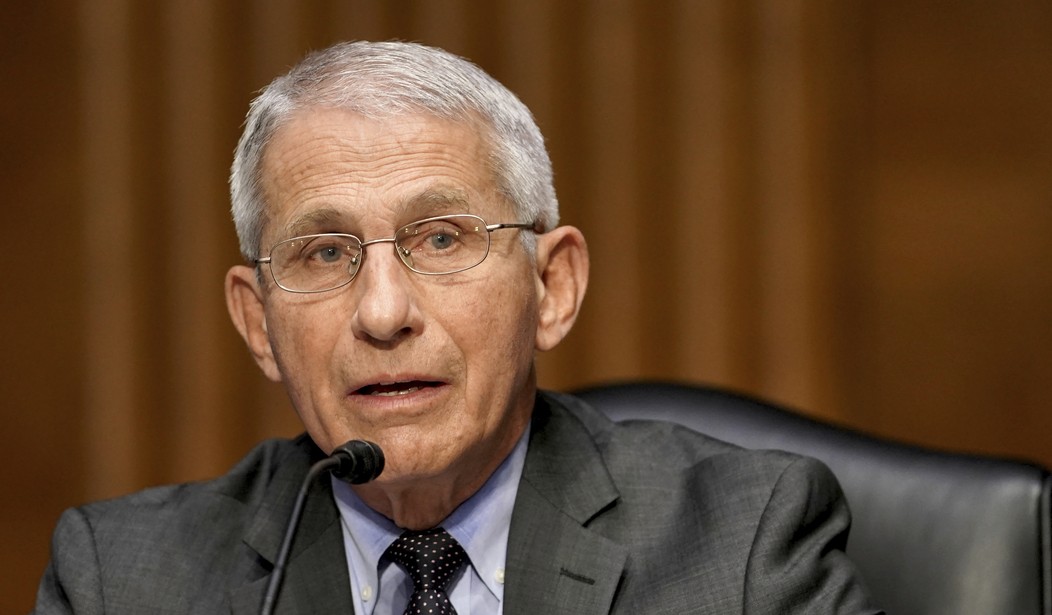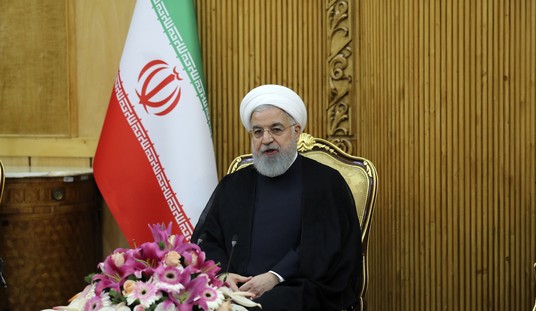I’ll tell you up front that there’s nothing salacious in this USA Today story about what was said during the conference call held on February 1, 2020. The salacious part is that there was a secret meeting at all. “That call likely would have remained secret if not for documents released under the Freedom of Information Act,” writes reporter Alison Young about the meeting. Why is that?
Fauci was interviewed for the piece and took the same studiously nonchalant attitude about it that he took in claiming a few days ago that he’s always been open to the lab-leak theory. But that’s only half-true. He’s never ruled out the theory but his tone lately has been far more credulous than it was last year, when he scoffed at the possibility. Asked about the February 1, 2020 emergency conference call to discuss the virus’s origins, he told Young that he remembered it “very well” and that “We decided on the call the situation really needed to be looked into carefully.”
Did they?
“It was a very productive back-and-forth conversation where some on the call felt it could possibly be an engineered virus,” Fauci said in our interview. Others, he said, felt the evidence was “heavily weighted” toward the virus emerging from an animal host.
Fauci said his role in helping to organize the meeting shows he has always been open to the possibility of a lab leak or an engineered virus. “I always had an open mind,” he said, “even though I felt then, and still do, the most likely origin was in an animal host.”
At the end of the call that winter Saturday in 2020, Fauci said, it was decided that Farrar would “give a heads up” to WHO Director-General Tedros Adhanom Ghebreyesus “and determine what further needed to be done.” Fauci said he doesn’t know whether Farrar reached Tedros.
Referring the matter to the WHO was tantamount to inviting China to reveal what it knew about the virus’s origins at its own convenience. That’s not looking into the matter “carefully.” A little more than a month later, the now-infamous letter in The Lancet organized by Peter Daszak, whose nonprofit funded the Wuhan Institute of Virology, made the case that the lab-leak hypothesis was a conspiracy theory and an insult to the noble scientists in China working hard to contain the virus. Ten days after The Lancet letter was published, the highly influential study co-authored by virologist Kristian Andersen appeared in Nature magazine arguing that the virus’s genome makes clear “that SARS-CoV-2 is not a laboratory construct or a purposefully manipulated virus.” That finding plus the Lancet letter all but ended the debate among scientists over a lab leak for the next 14 months.
Andersen was on the February 1, 2020 call with Fauci. Was Daszak? It’d be nice to know in light of his conflict of interest, which went unrevealed in the Lancet letter. As it is, at least one expert suspects that the scientific consensus was set during that conference call that the lab-leak theory was kooky:
“A small group of scientists, and a larger group of science journalists, established and enforced the false narrative that scientific evidence supported natural spillover, and (also) the false narrative that this was the scientific consensus,” said Richard Ebright, a molecular biologist and biosafety expert at Rutgers University in New Jersey.
There were other views out there, they just weren’t given much coverage as being credible.
“The February 1 telecon,” Ebright said, “appears to have played an important – probably crucial – role in establishing and enforcing that false narrative.”
A major player in all this is Andersen, who became famous overnight among Fauci’s critics when he turned up in the FOIA’d emails that were released a few weeks ago. On January 31, 2020, one day before the secret conference call, he sent Fauci this email:

Andersen was immediately besieged on social media by people demanding to know how he had gone from suspecting that SARS-CoV-2 was genetically engineered to publishing a study six weeks later insisting that there was all but zero chance that it was built in a lab. The timeline is even sketchier than that, though: Just four days after he sent the email above to Fauci, Andersen told other scientists that the possibility that the virus was engineered was the stuff of “crackpot theories” since the data showed “conclusively” that it wasn’t. “It remains unclear what new evidence came to light in those three days in early February 2020 to change Andersen’s opinion,” wrote Young in her USA Today piece. “He wouldn’t talk with me about that.” He’s not talking to the public anymore about it either, having deleted his Twitter account shortly after the Fauci email emerged.
The New York Times finally convinced him to answer some questions a few days ago, however. Andersen’s explanation for his change of heart was vague, if simple: The more scientists learn about a subject, the more apt they are to revisit their preliminary conclusions. He learned that some of the seemingly “unique” features in the virus’s structure that made him suspect genetic engineering weren’t actually so unique after all. They’re seen in nature too. How he went from suspecting possible lab origins for the virus to sneering about crackpot theories in the span of less than 100 hours, though, remains curiously unclear.
The features in SARS-CoV-2 that initially suggested possible engineering were identified in related coronaviruses, meaning that features that initially looked unusual to us weren’t.
Many of these analyses were completed in a matter of days, while we worked around the clock, which allowed us to reject our preliminary hypothesis that SARS-CoV-2 might have been engineered, while other “lab”-based scenarios were still on the table.
Yet more extensive analyses, significant additional data and thorough investigations to compare genomic diversity more broadly across coronaviruses led to the peer-reviewed study published in Nature Medicine. For example, we looked at data from coronaviruses found in other species, such as bats and pangolins, which demonstrated that the features that first appeared unique to SARS-CoV-2 were in fact found in other, related viruses.
“We hadn’t yet performed more in-depth analyses to reach a conclusion, rather were sharing our preliminary observations,” he told the Times about his email to Fauci. I’m not a scientist so I’m not in a position to assess whether that’s plausible, but it strikes me as weird that he would have semi-casually fired off an email to the head of the NIAID that a virus on the brink of igniting a global pandemic might well have been Frankenstein-ed in a lab. That seems like a claim you might want to check your work on first, particularly if your analyses were capable of being completed within days. Why didn’t he just wait wait a week to email Fauci while he double-checked his hypothesis? “Oh snap, the furin cleavage site *does* occur in viruses found in the wild? Never mind, then.”
Anyway. It’s not clear why Fauci didn’t reveal the conference call before his emails revealed it for him. But then we’re used to him holding back information from the public by now.








Join the conversation as a VIP Member